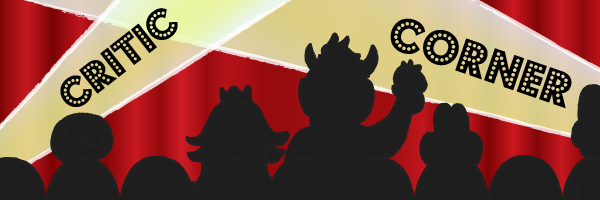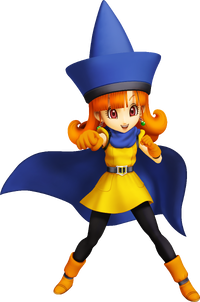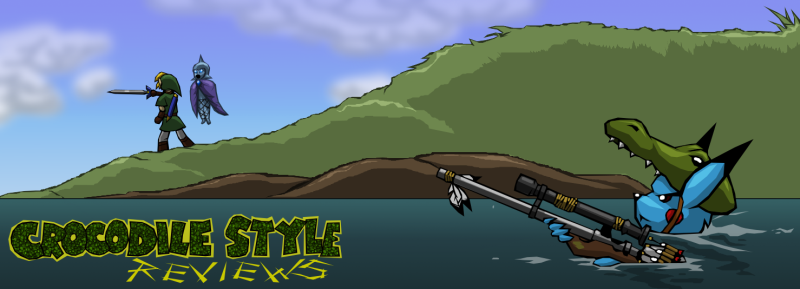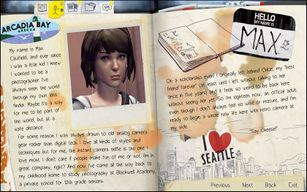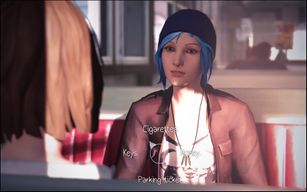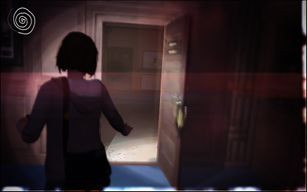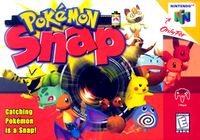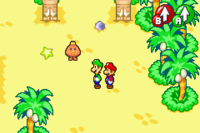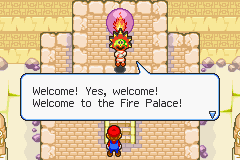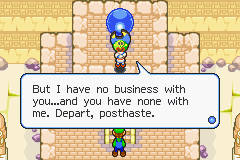The 'Shroom:Issue 101/Critic Corner
Director's Notes
Written by: Crocodile Dippy (talk)
Well, I'm out of ideas. Bugger off, I probably contributed the second most overall work to Issue 100 last month, I don't owe y'all a detailed director's notes. You entitled cretins. You know what, actually; in place of my notes, have my dumb presentation for the 'Shroom Awards. It has cards in it!
Anyway, in terms of actual news, we have a brand new writer on the Critic Corner team starting this issue; Time Turner (talk) will be contributing Location, Location on a monthly basis now, so get excited for all the charming locations in the Mario series he'll be shining a light on.
Section of the Month
| Critic Corner SECTION OF THE MONTH | ||||
|---|---|---|---|---|
| Place | Section | Votes | % | Writer |
| 1st | Should Have Been | 3 | 37.5% | MrConcreteDonkey (talk) |
| 1st | Marioverse Reviews | 3 | 37.5% | Crocodile Dippy (talk) |
| 3rd | Character Reviews | 1 | 12.5% | Yoshi876 (talk) |
| 3rd | Shoey's Shoetacular Reviews | 1 | 12.5% | Marshal Dan Troop (talk) |
Yoshi876 goes on an unconventional dragon quest in his review of Alena.
[read more]
Shoey gets the camera prepped for a modelling session of Pokémon Snap.
[read more]
It's the holiday season! Time Turner takes you for fun in the sun at Oho Oasis.
[read more]
Character Reviews
Alena
Before we properly start this review, it should be noted that I know next to nothing about the Dragon Quest series, and I am basing this entire review off of quotes from Fortune Street, so don't get mad if I get something wrong. Anyway, enough of this boring crap, let's go!
Alena is the Tsarevna (princess) of Zamoksva, which I believe is the Dragon Quest equivalent to Russia. Now, whilst she is a princess she isn't interested in the normal princess stuff like making out with frog princes or getting kidnapped, no she's much more interested in punching the living daylights out of anyone using her martial arts skills. She is essentially Xena: Warrior Princess, just with a less revealing outfit.
And her outfit is actually my main gripe with her; she looks like she should be a spellcaster, what with a generic wizard hat and a random-ass cape. My first impressions of her was that she was a mage who just preferred to beat everyone up, but would still use magic in most combat situations, and it turns out I was horribly wrong. Which leads me on to my other gripe with her: her personality. She seems exclusively geared to just want to beat people up, asking for sparring partners or having to be reminded that she's playing a rip-off Monopoly and not participating in a fighting tournament, it seems just very one-note and ends up causing her character to commit a cardinal sin: she's boring. There is nothing else to her than just fight, fight, fight; maybe she gets a personality expansion in the Dragon Quest series, but here in the Mario series she like a WWE fighter: bland, boring, and not many people caring about her.
Crocodile Style Reviews
Written by: Crocodile Dippy (talk)
| Life Is Strange | |||||||||
|---|---|---|---|---|---|---|---|---|---|
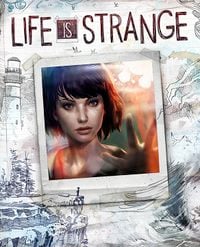
| |||||||||
| Developer | Dontnod Entertainment | ||||||||
| Publisher | Square Enix | ||||||||
| Platform(s) | Windows, PlayStation 3, XBox 360, PlayStation 4, XBox One | ||||||||
| Genres | Point and click adventure, drama | ||||||||
| Rating(s) |
| ||||||||
| Available From | |||||||||
Oftentimes, I reckon I was lucky to be taken out of school before the fourth grade and put into homeschooling. I mean yeah, without proper supervision I ended up flaking on most of my schoolwork so I could play Theme Park World, but I managed to avoid all the garbage high school politics that I’ve heard so much about, and thusly managed to hold on to my childhood innocence for just that little bit longer… well, until I discovered DeviantArt, that is. The school experience is actually surprisingly well-explored in video games, between the playground politics of Bully, to the visceral mass murdering of Lollipop Chainsaw, to the “I didn’t know she was under 18, officer, I swear” simulators of the entire visual novel genre. However, shockingly enough, school life has been yet untouched by the kleptomaniacal hand of point and click adventure games, a genre that otherwise is willing to jump on any bandwagon in order to stay relevant. That is, until just this year, with the release of Life Is Strange.
Life Is Strange is made by Dontnod Entertainment, whom some of you may remember as the makers of Remember Me, which I reviewed quite unfavourly way back in 2013. After struggling once more to find a publisher because vaginas are terrifying to stuffy businessmen who fear what they’ve never seen before, the studio is back again with another release, this time an episodic point and click adventure game because we’re in very short supply of those these days, aren’t we? Actually they’ve largely been a monopoly by Telltale Games, whose massive hit The Walking Dead continues to remain the golden standard of adventure games in my eyes, and is probably why Life Is Strange does as much as it can to ape its style.
But I'm getting ahead of myself. Life Is Strange follows the life of Max Caulfield, a young girl who has returned to her town of origin, Arcadia Bay, to attend a fancy arts school so she can become a photographer, an most humble endeavour right up until she sees a girl get shot by a crazy rich kid and in the panic discovers she can reverse time. American schools, am I right? The overall story sits somewhere between The Breakfast Club and A Sound of Thunder, as Max begins to have visions of an apocalyptic storm that’s going to destroy Arcadia Bay by the following week, so she takes it upon herself to figure out how to stop it… all the while, uncovering a more domestic conspiracy theory alongside her childhood friend, whose missing friend sits at the centre of the mystery. So y’know, standard college life.
This frames the gameplay as well, as even though it follows the standard adventure game affair of walking around talking to people and finding random bits of junk on the off-chance they’ll open a wine cellar down the track, you are also granted the ability to reverse time to change which piece of junk you opt to pick up instead. OK that’s disingenuous actually, there’s very little item collecting in this game, probably because The Walking Dead didn’t have to put up with this pack-mule shit so neither does Life Is Strange, so thus the majority of the challenge comes from logic puzzles and dialogue trees, following down that ever-popular technique of “your choices will have consequences!”
I guess it is more justified in this instance since, y’know, butterfly effect and all, but the time reversal mechanic seems a bit poorly thought out for a myriad of reasons. First off, it means there’s no fail state in the game, as all mistakes or unsavoury results can be undone by simply time travelling back. Yeah I know, long-term problems can’t be undone in this fashion because Max can only reverse time back a few in-universe minutes at a time, which as far as superpowers go sits pretty high up on the disappointment scale, alongside manipulating hair or being able to talk to animals only to discover they’re all white supremacists. But the second issue with the mechanic is that it stabs replay value in the neck somewhat as you can see all dialogue branches in one sitting by reversing time and cycling through each of them. The Walking Dead and The Witcher 3 make a concerted effort to keep you locked into your decisions for maximum poignancy when everything goes to shit, while Life Is Strange doesn’t even throw a time limit on major choices in the story, a relatively risk-free approach which somewhat damages the overall dramatic effect for me.
The aesthetic of the game itself is also indie as fuck, between the arts college setting, the (granted, self-aware) “too mainstream for me” attitude of the protagonist, and a soundtrack pulled off the best new tracks list on Pitchfork. I guess if you’re going to work off indie cred, you may as well go full hipster, but it does add an extra layer of unnecessary pretentiousness to a game that’s already treating itself like it’s the only “real” thing in this room right now, duuuude. Not that I’m one to talk given I’m a DnB girl, but it’s just staggering to see so much hipster in one small game; it’s like if Bill Lawrence made a video game. Its alternative roots does lend itself quite nicely to exploring sexuality a bit more seriously than most games, if not only briefly, giving Max the decision to kiss Chloe or not… speaking as a bisexual girl, this was the easiest choice I’ve ever made in my entire span as a gamer.
In the game’s defense, the story does justify its pretentiousness more as it progresses, and clues to the kidnapping conspiracy are delivered steadily enough between more contemplative character-building moments to maintain intrigue in the narrative. The segment in episode 3 where Max has to stop a bullied girl from committing suicide without the use of her powers was a genuinely tense and personally impactful scene, bolstered by the fact that her ability to save her is hugely dependent on picking up personal information beforehand to convince her that Max does care. Less dramatically, episode 4 requires her to piece together all the information she and Chloe have acquired to try and pinpoint the location of the kidnappings, which no amount of time travel is capable of helping with, forcing the player to rely entirely on their own observational skills. It’s moments like this and the investigation mechanics in The Witcher 3 that really get my trench coat fluttering in the moonlit night, reaffirming my belief that I was a private dick in a previous life.
But it’s also moments like the suicide prevention mission that make me realise that this game could’ve proven so much more challenging and dramatic had a limit been placed on Max’s time travel ability, especially given said mission is built entirely on the precedent that overuse of Max’s powers causes a great deal of physical strain on her, even making her fall unconscious at one point. It would certainly place a limit on how many decisions you’d be allowed to change in any given episode, which could create a sense of “well, I might need the Flux Capacitor for later,” which would force the player to ration out their rewinds with greater care.
Life Is Strange is earnest, however, and does manage to capture the high school experience as well as it possibly can when structured around a concept as far removed from reality as time travel. As with Remember Me, Dontnod showcases their ability to deliver conceptually brilliant game ideas, but failing to capitalise on them with more intuitive or expanded mechanics. I do find it more enthralling than Remember Me, though, and the plot has especially done a lot to keep my interest with a myriad of twists and well-paced revelations. There’s only one episode left to go, and it can be considered a triumph that I’m excited to see how this whole thing ends, although there still exists a chance that the finale will pull a Lost on us and make me wish I could time travel back to this moment to punch myself in the face for being so fucking naïve.
Shoey's Shoetacular Reviews
Written by: Marshal Dan Troop (talk) (edited by Nabber (talk)
Hello Shroom readers, I’m Shoey, and it’s time for another edition of Shoey’s Shoetasticular Reviews YAY! This month I will be reviewing an all-time classic: Pokémon Snap, for the Wii Virtual Console. Developed by HAL Laboratories and Pax Softnica, Pokémon Snap was originally published by Nintendo in the year 1999 (2000 for the PAL region) and was re-released on the Virtual Console in 2007. Pokémon Snap is a first-person rail shooter in which you play as Todd Snap on a mission from Professor Oak to take pictures of all the Pokémon on Pokémon Island. Hey, look at that - another game with a below-average plot (it’s almost like it’s a trend or something with the games I play). But anyways, since we know what the game's about, how about we move onto how the game plays?
As Pokémon Snap is a rail shooter, the game automatically moves you through the level while you attempt to take as many pictures of Pokémon as possible. When the level is over, you are returned to Professor Oak’s lab, where you select your best picture of a specific Pokémon and have him judge the quality of the picture. Professor Oak grades the photos based on size (how big the Pokemon in the picture is), pose (what the Pokémon is doing), and technique (which is just a fancy way to say that the Pokémon was in the middle of the picture). You can also gain bonus points for having more than one of the same Pokémon in the picture, and for having the Pokémon do special poses. This adds a lot of charm to the game, and I love seeing the Pokémon do special poses such as watching two Pidgey’s attack a Meowth, or my personal favorite: Pikachu riding an Electrode, which was my main argument to a coworker as to why this is a good game.
I do have some criticisms when it comes to the judging criteria, though, because it seems like you can get knocked points for size (if you get anything less than about 220 Oak stops judging the picture). This happens even if the picture is the same size as a picture that gets a 240 score, and there’s really no way to tell if your picture will be acceptable until you get to the judging stage. I also feel like the technique category can be a little fickle at times, because it seems that if your framing is off by just a little bit, you'll lose points for it. The game also has power-ups that are given to you after you achieve certain point objectives. Each power-up allows you to interact with the world differently and makes certain Pokémon do different things. My personal favorite power-up is the turbo power-up, which allows you to go through levels faster. This is very useful since it can be repetitive to play a level again to get a picture of one Pokémon.
Well, now that I’ve explained how the game plays, I’m going to explain how the games graphics are. I like the way the game looks - I think the graphics are fairly well done and are nice to look at. All of the Pokémon in the game are accurately represented (unlike in the original Pokémon games :P). Also, some of the levels have a great atmosphere to them. The Cave level has a section with sprinkling water drops that look very pretty, and the Valley stage has a nice-looking whirlpool (as well as a fun section where you go down a fast river). However, some levels are rather bland, such as the Volcano level which only consists of lava and a bland mountain path. Overall, though, the graphics are pretty good. They’re blocky to an extent, but that’s to be expected for when it was made, and while some parts are a little bland, there isn’t anything really offensive about them.
Now that we’ve discussed how the game looks, let us move onto how the game sounds. Honestly, the soundtrack to Pokémon Snap is fantastic. There isn’t a single track that I don’t find enjoyable. Almost every track is vibrant and full of energy (and flutes). They set the mood perfectly, and some really help with the atmosphere, like in the Jungle level that features birds chirping and leaves crunching. My personal favorites are the Options song, because there's a funky vibe to it, and the Volcano stage, which contains some great bongo parts. While I wouldn’t go so far as to say that any of the songs in Pokémon Snap are good enough to get stuck in your head like the Song of Storms from The Legend of Zelda: Ocarina of Time, the songs are great and are really fun to listen to.
Now that we are past the jams, we are going to move forward to what I would consider the worst part of the game: its length. Pokémon Snap is a short game containing only seven levels and only 63 out of the original 151 Pokémon. It can be beaten in just 5 hours, even if you don’t know what to do. It also suffers because you have to play every level multiple times in order to get every possible Pokémon pose as well as unlock the hidden path in some levels. I’m not going to lie, all of this makes the game very repetitive, especially when you keep messing up one single part of a level and have to keep starting it over and over again. So while the game is fun, you are more than likely going to find yourself speeding through levels just to get them over with. Now that I’ve finished talking about length, it’s time to wrap up this review.
Honestly, Pokémon Snap is probably my favorite Pokémon spin-off game. The music is great, the graphics are good, and the gameplay is fairly solid. The length is a problem, and it’s disappointing that there aren’t more Pokémon. But Pokémon Snap is a very relaxing game that features some cute and charming moments that are fun to watch. I would buy a second Pokémon Snap game in an instant. However, Pokémon Snap isn’t for everyone, and some people could be turned off by its slow gameplay and lack of replayability after a few playthroughs. But hey, if you like Pokémon and you’ve got 10 bucks to spare, I would consider this a good buy.
Final Score: 8/10
Location, Location
Written by: Time Turner (talk)
While you're reading this article, feel free to listen to some appropriate music.
Hello, passionate readers of The ‘Shroom! My name is Time Turner, and this is my first time around this corner of the news. I’ll be hosting this rousing edition of Location, Location, taking you on journeys across the Mushroom Universe and informing you on some of the top vistas around, from the famous of the famous to the ones you probably never heard of. We’ve got tons of places to show off (seriously, have you seen how packed the categories are?), so let's dive right in.
Speaking of diving in, let's talk about a location just brimming with ocean to dive into. Since we're in the middle of summer, I thought that it’d be appropriate to talk about a place sequestered from the rest of the world, with blue waters, lush palm trees, and exotic life. It's a perfect place to visit, as long as you don't mind being turned into the Mario version of a Mr. Saturn; that's right, it's Oho Oasis!
Making its debut in the first of the Mario & Luigi games, Superstar Saga, Oho Oasis is one of the largest islands in the Oho Ocean, off the coast of the Beanbean Kingdom, and is the only one that we ever get to hear the name of. Our favourite pair of plumber siblings ended up here after a crash landing with the Beanstar after it went crazy with not-Peach's voice and then shattered into four pieces (long story), and they picked up a couple of unique skills here: Mario learned how to harness his fire abilities without a Fire Flower through his Firebrand, and Luigi gained an electrifying experience with his Thunderhand. These skills are amazing additions to the game for so many reasons: they feel like both quintessential Mario abilities, work perfectly with the RPG element of the game, open the way to a lot of interesting puzzles, and gives Luigi something that's actually unique to him (without going way out of the Mario standard) and not just him following in his Mario's footsteps. It's a shame that they never made appearances after this game.
Despite the amazing qualities of the brothers’ new arsenal, the gifts are only as memorable as the packages they arrive in, and let me tell you, Oho Oasis is one of the best packages in the entire game. First of all, before you even see anything, the first thing that you hear, the music, is fantastic. It is the perfect light song to set the mood, especially after the events before the Oasis. It's ridiculously catchy, upbeat, and instantly makes the location memorable, especially considering all of the diversity throughout the entire game. Serious praise has to be given to the game's composer, Yoko Shimomura, for every rendition in the game, but especially Oho Oasis’ theme.
Now, about the visuals: for a GBA game, the graphics look great throughout the entire game, and the Oasis… isn't really the best place to show that off. Don't get me wrong, everything still looks vibrant and is perfect with the rest of the game, but there isn't much in the way of variety across the island, which is especially noticeable since it's not that big. There are some palm trees, and a craggy area to the north next to the sandy area to the south, and it's all still pretty, but there are other sand areas in the game that look nearly indistinguishable to the Oasis, and they show up both before and after the Oasis’ appearance. The temples in the middle offer some variety, but I still never found it all that appealing, which is a shame because the characters on the island look absolutely unique.
The Oho Jees (they come in two exciting colours, flaming red and jolting blue!) are the main citizens of the island, and as mentioned previously, they bear more than a resemblance to EarthBound's Mr. Saturns, with their squat appearance and nonsensical dialogue, but at the same time, I still really like them. As standalone entities, they're the cherry on top to all of the zaniness that's been faced ever since Mario and Luigi first flew into the Beanbean Kingdom, but still contribute to the idea that you've ended up someplace even more exotic than a kingdom filled with exotic locations. As a nod to Shigesato Itoi's classic series, it still works, even if it's not terribly subtle, since it still fits the theme even if the reference flies over your head.
The Oho Jees are also the only taste of any sort of combat that you’ll get, and even then, it's completely optional, which is odd for a non-village in an RPG. Once you get your hands blazing/thundering, blasting the right colour of Oho Jee with the right element sends them into a frenzy and launches you into battle. Here's a hint: they're colour-coded like every other game with elements. Yeah, one of the biggest downsides of the whole series, but definitely Superstar Saga as well, is that battles aren't all that hard, with the obvious tells for weaknesses and counterattacks and whatnot, and the Oho Jees aren't much of an exception, especially when they can randomly heal you in battle and waste a turn saying something nonsensical. It's great that they embody their strangeness no matter what, but that doesn't make it any less lame. Besides a couple of equipment that they can drop, there's not much of a reason to go back to them. I would have definitely liked to see what Nintendo could have done with them in a future game, but that unfortunately never happened.
There are a couple more characters to discuss, and they're definitely the biggest attraction in the whole island, besides the whole fire/lightning shooty power: the characters who grant those powers, the Fire and Thunder Gods themselves. Maybe part of this is just my nostalgia of the first time I saw these guys, but it always stuck out to me simply because of their position: you hear the Oho Jees talk about gods, and you just chalk it up to their zany behaviour, but they actually appear right before you in a flash of bright light. Gods showing up when you least expect them to is a trope that I’ve always liked, and this is probably why. They're a breath of fresh air from all of the red and green twins that Mario and Luigi find throughout the Kingdom; finding any of these duos is a sure-fire sign that there's a new technique to learn, and the fact that this is avoided here is a clever way to hide it, and make you feel intimidated when you first meet them rather than anxious about what new power you’ll get. Their design supports this as well: sure, parallel sun and moon motifs are nothing new, but it fits the environment well as both something unique in the Beanbean Kingdom and the Mario series in general (Brighton and Twila notwithstanding, as they showed up after Superstar Saga) and the theme of the Oasis and its inhabitants. Considering that Mario and Luigi essentially have a couple of friends in high places, I always found it disappointing that they never made any other appearances.
You may have noticed that a common trend of this article: nothing ever makes reappearance after their first encounter. There's no reason to head back to the island, besides if you want loot from the Oho Jees, the Oho Jees themselves barely appear outside of the island besides a couple of individuals also on isolated islands, neither the Fire and Thunder Gods nor their temples or any remnant of their legacy or power ever show up again… On a whole, the Oho Oasis is there as a vehicle to deliver the Firebrand and Thunderhand (which are also absent from any future instalments), and maybe that's why I always remember it; there's not much to the Oasis, but there's so much potential for expansion that is never capitalised on. As it stands now, Oho Oasis isn't the best area to visit, especially with the variety of the Kingdom, but that doesn't stop me from thinking about what if's. Maybe in the future, we’ll be able to revisit the island, and I’ll always be hoping for it.
| The 'Shroom 101 | |
|---|---|
| Staff sections | Opening Statement |
| The 'Shroom Spotlight | |
| Sub-teams | Fake News • Fun Stuff • Palette Swap • Pipe Plaza • Critic Corner• Strategy Wing |
| Specials | Ultimate Character Tournament • Awards 2015 Art Contest Results |
| Closing Statement | |
